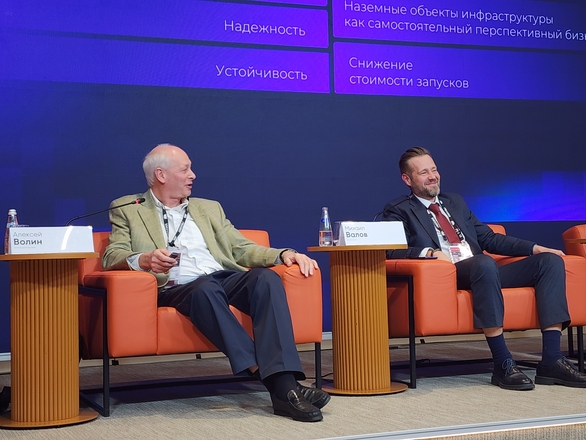Guaranteeing sovereignty from space: RSCC General Director explained how satellites ensure telecommunications independence at the “Digital Solutions” Forum
47 countries currently have their own satellites, while from 2021 to 2024, state investment in space increased by almost 40%, while private investment decreased threefold. General Director of RSCC Alexey Volin stated this at the session “Development of Domestic Communications and Broadcasting Satellite Constellations.” The discussion took place as part of the IT Forum “Digital Solutions” on November 14 in Moscow.
Grigory Bondarenko, Acting Minister of Digital Development of the Kamchatka Krai; Anatoly Semenov, Deputy Chairman of the Government of the Republic of Sakha (Yakutia); Nikolay Raspopin, Minister of Digital Development of the Krasnoyarsk Krai; Mikhail Valov, General Director of JSC RESHETNEV; and Dmitry Agafonov, Deputy General Director of LLC BUREAU 1440 also participated in the event.
“Almost every country today strives to acquire its own orbital system or at least one spacecraft to ensure its sovereignty and independence in space. We also operate a constellation of 12 geostationary satellites and plan to launch eight more by 2030 to replace those reaching the end of their operational lifetime. The fully domestic Express-AMU4 is already in production, and we must use it to refine all technologies for the next seven satellites,” shared RSCC General Director. He added that the company intends to maintain all orbital positions and frequencies of the Russian Federation during the replacement process.
According to Alexey Volin, video transmission remains one of the main drivers of geostationary operators' growth. “By 2029, satellite companies' global television broadcasting revenues will decline by 36%, and by another 13% from 2029 to 2033. However, the decline in video services will be extremely uneven. The decline will be driven primarily by the US, European, and Japanese markets, with a moderate decline in Latin America. In Eastern Europe and Russia, the share will remain fairly stable. In India, Southeast Asia, and Africa, on the contrary, television will grow," he is confident.
At the same time, the number of high-definition television channels will expand, as they require more bandwidth than standard SD channels. This means demand for satellite communications services will increase. “By 2033, the number of HD channels is projected to increase by 1.6 times. The largest growth will occur in Russia and Central Asia — fourfold. This allows us to feel quite confident in our markets in the next 10 years,” concluded RSCC General Director.


